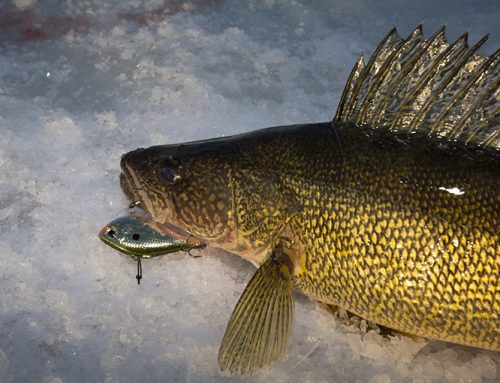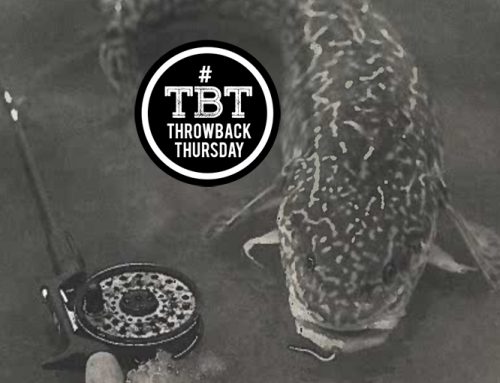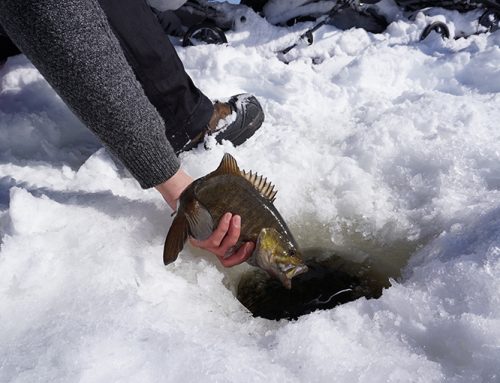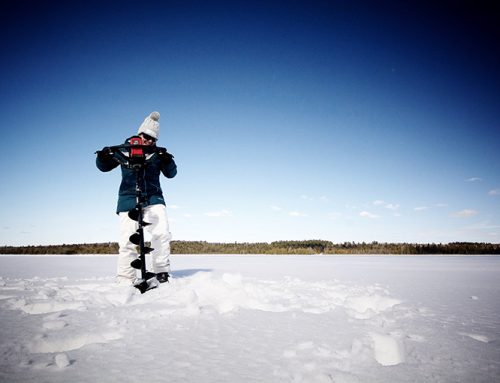
Soft plastics are essential baits for ice fishing crappie, perch, and sunfish. Threaded on a tiny jig, the scent, shape, and limber action of plastics readily catches panfish in winter. Tubes, worms, bugs, and minnows between one and two inches are four of the best plastics you can use. Here’s why.

Tubes
If there’s a do-it-all plastic for perch and crappie, it’s a tube. Like a chameleon, a tube can represent several aquatic creatures, depending on the bait’s size, colour, and movement.
A white or smoke tube looks like a jumbo freshwater shrimp (a.k.a. skud). Lightly twitched up and down in the water, the tube mimics the skud’s kicking, swimming movement.
Take the same tube, but jig it more aggressively, then let it fall on semi-slack line. Now, you’re replicating a panicked, wounded minnow – just the thing giant perch and crappie eat up like candy.
Switch colours for more options. Use brown or green to copy a crayfish or a nymph. Drop the tube to bottom, then shake the slack in the line while slowly moving the rod sideways, so the tube crawls along the floor, tentacles flaring enticingly.

Worms
Crappie, perch, and sunfish eat a lot of thin food. Bloodworms, the larvae of chironomidae flies, are one example. These and other invertebrates live in squishy, soft bottoms found on flats and shelves located at the base of steep drop-offs.
Fishing these areas without a thin, wispy plastic worm is like showing up to play shinny hockey and forgetting your skates. And, it’s no fun watching from the sidelines while others score on the ice because they brought the right gear.
Gingerly rocking the rod tip quivers a finesse worm, giving it a subtle swimming action that coaxes bites from hesitant panfish. Keep this motion going, while working the water column, slowly raising and lowering the rod while dancing the worm.
When pannies are suspended, slowly swim the worm down until it’s a few feet above their heads. Then swim and twitch the worm to call-up aggressive fish.
When fish are holding near bottom, bang on the floor to stir up silt. Then swim it up out of the muck.

Bulky Bugs
Always carry bulky plastics. These baits are the yin to the finesse worm’s yang, so to speak. They come in a range of sizes and have different names, like nymphs, creatures, and bugs. What makes them similar are their many legs, antennae, tails, and other appendages.
Some days jigging a bulky plastic catches more panfish than small, finesse baits. The plastics’ meaty profile also appeals to big panfish. This can help keep the pipsqueaks away, while attracting slab crappie, jumbo perch, and giant sunfish.

Minnows
A plastic minnow on a jig is a versatile winter presentation. Snap jigging attracts fish from wide distances and triggers reaction strikes. The more active and mobile fish appear on my sonar, the higher I jig, aiming to rile up a fish so it aggressively swims up and is committed to eating the bait.
Finesse moves also work. Lightly jigging a minnow mixed with short pauses and shakes will fool neutral fish. Heck, I’ve even caught panfish soaking a plastic minnow on a dead-stick rod.
Plastics tubes, worms, bugs, and minnows catch panfish in most ice scenarios. While they’re great on their own, remember there’s nothing wrong with tipping one with live-bait, like a maggot or minnow head, for the best of both worlds.






Leave A Comment